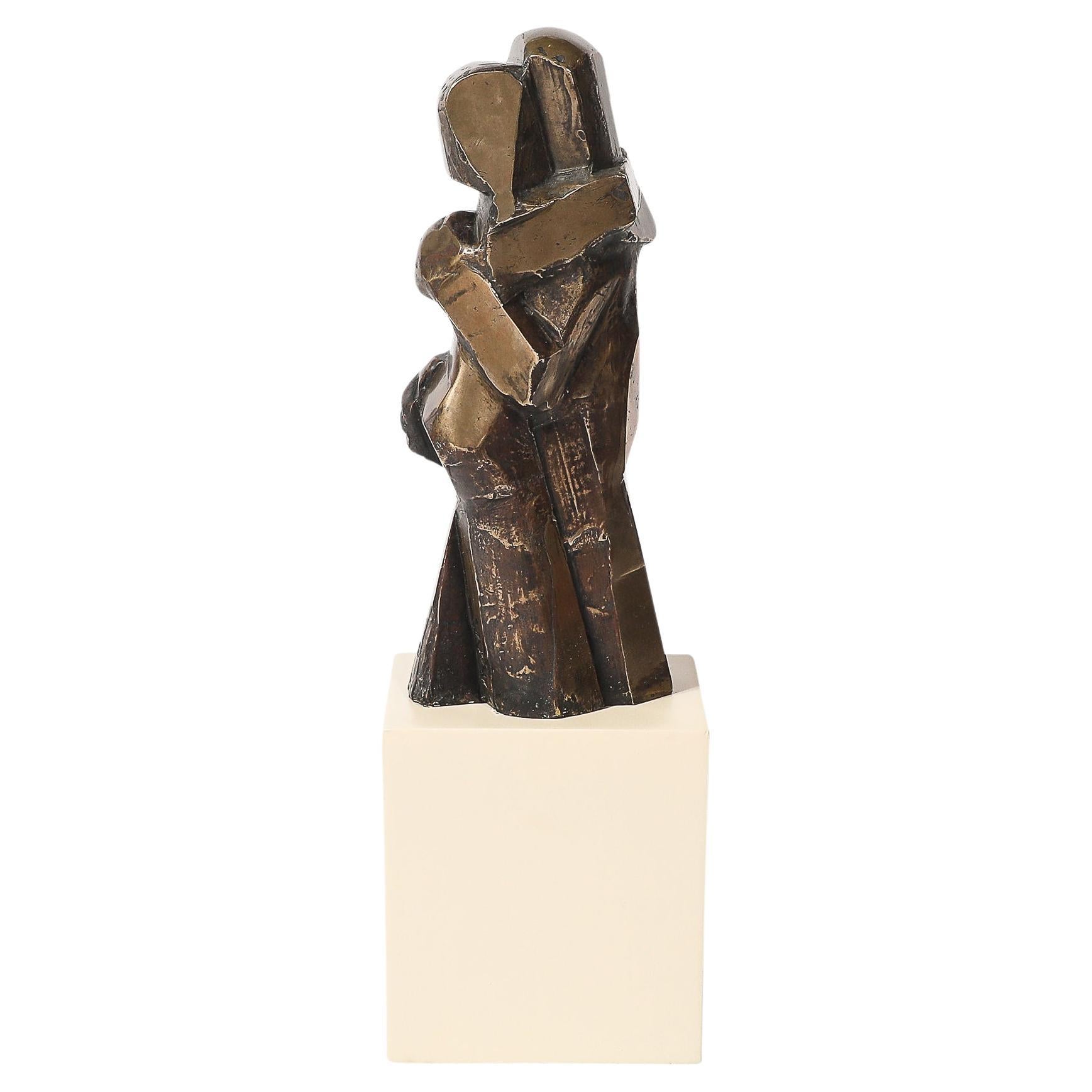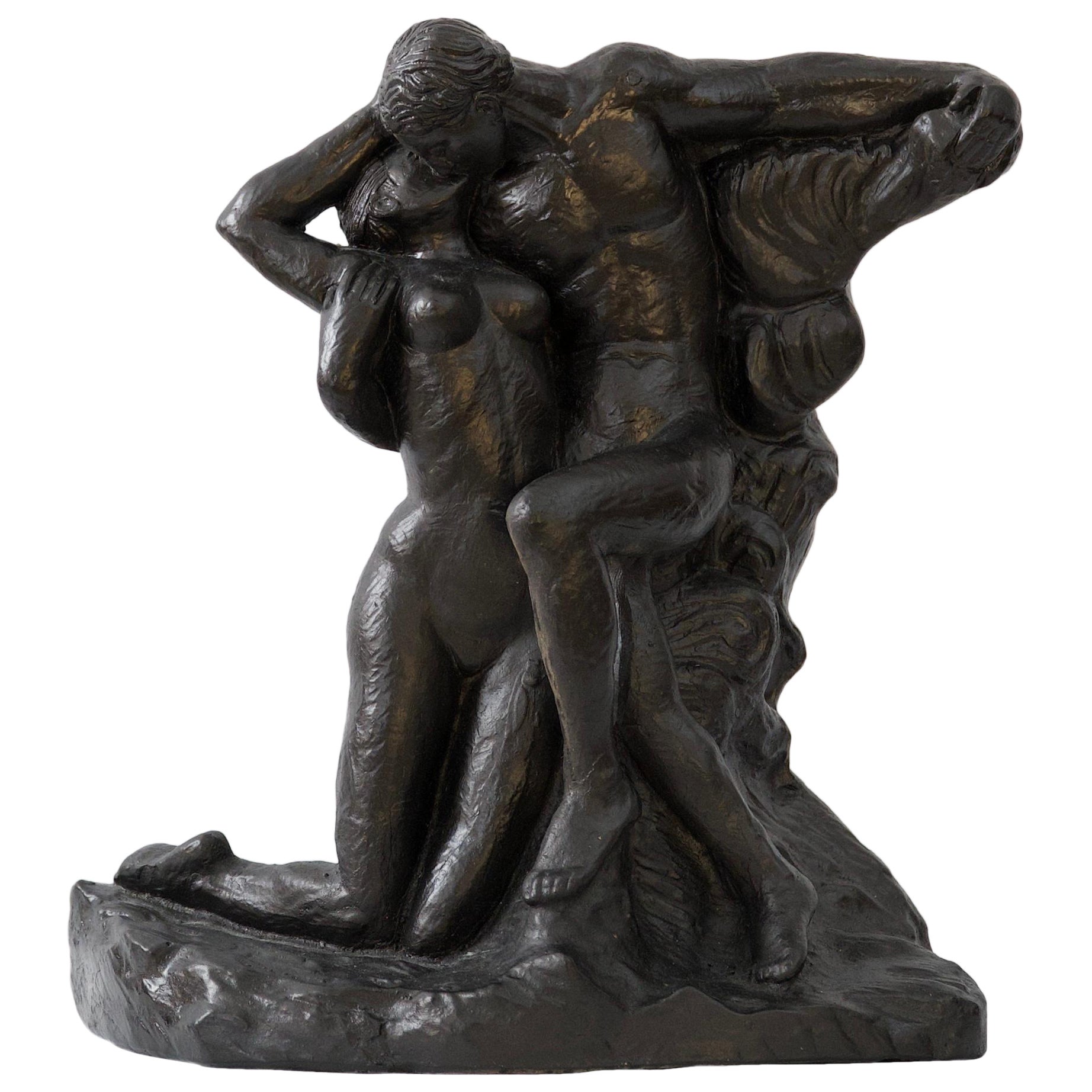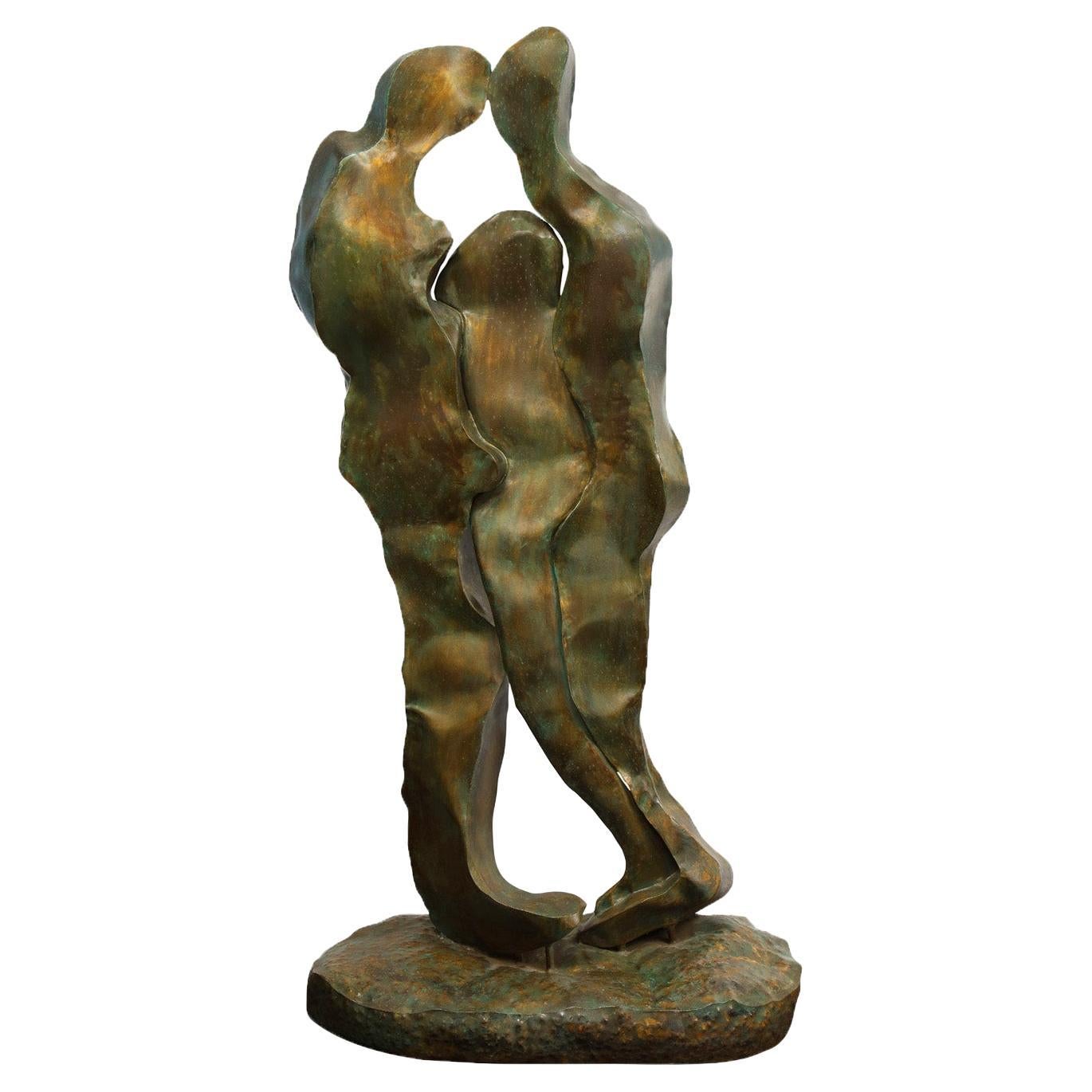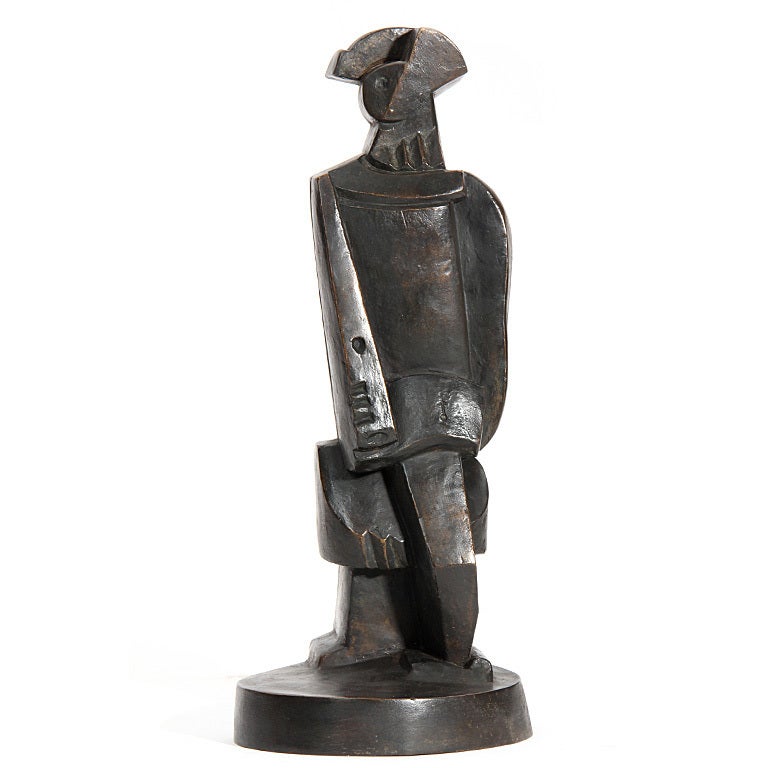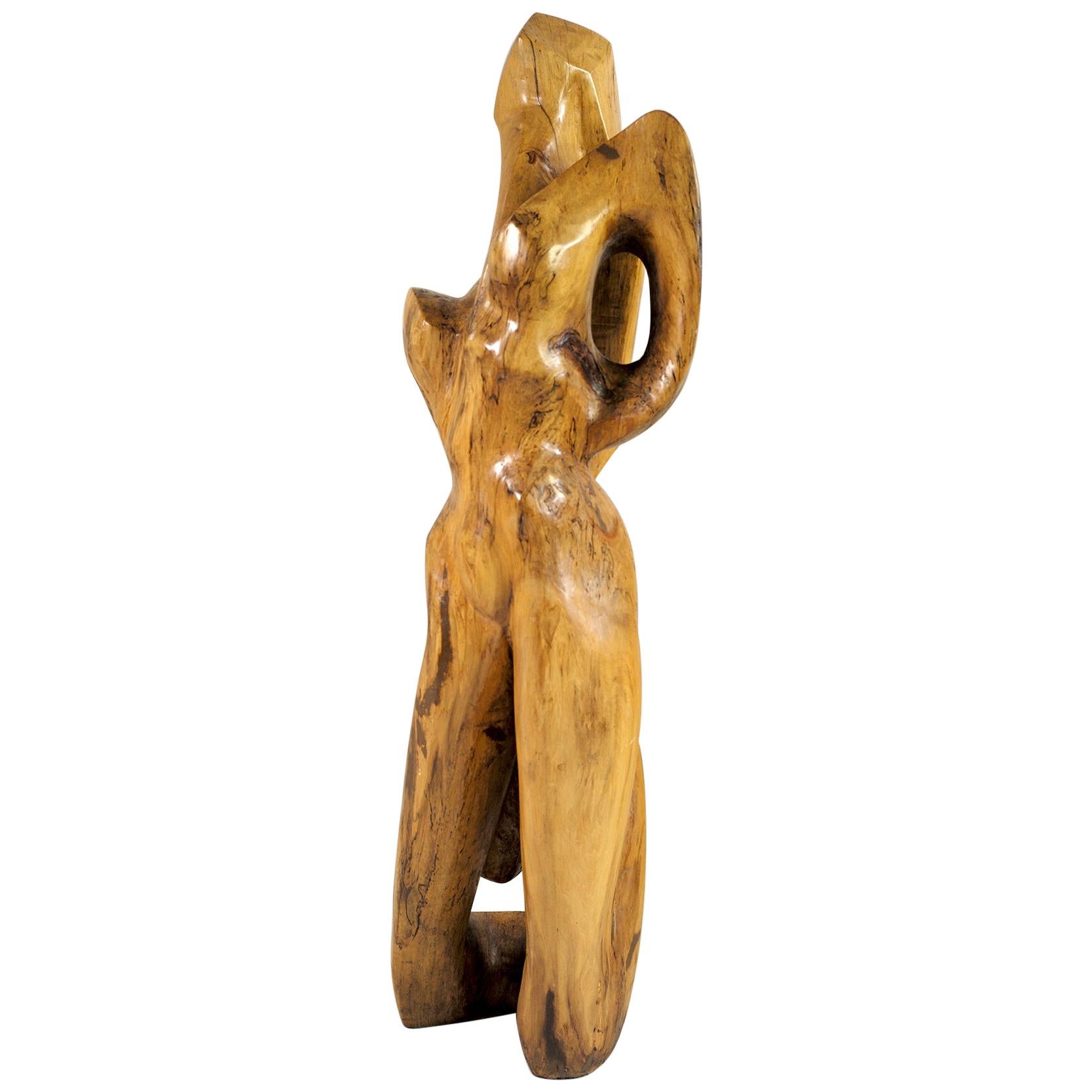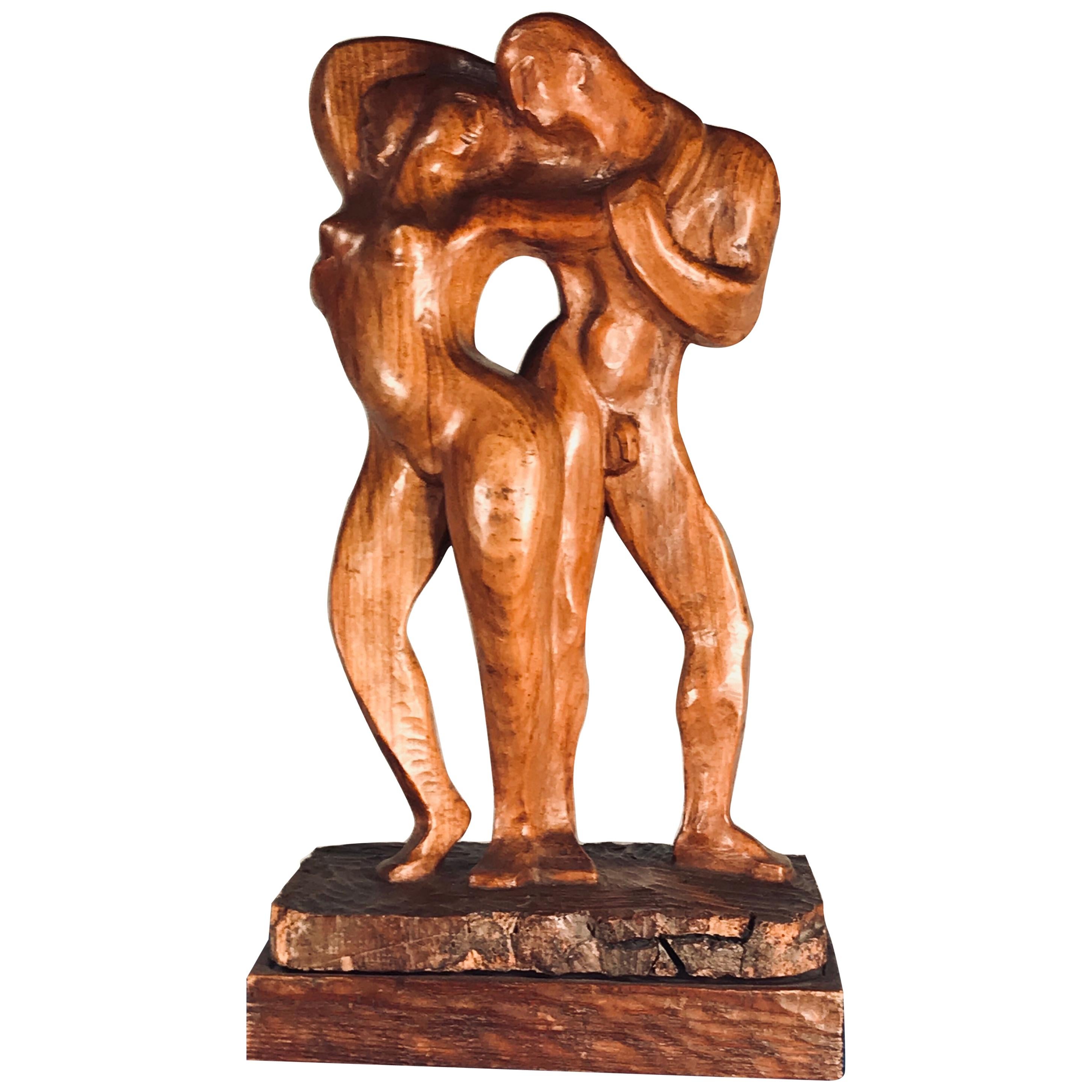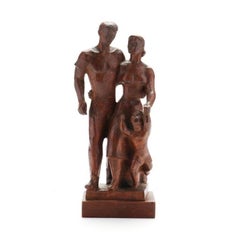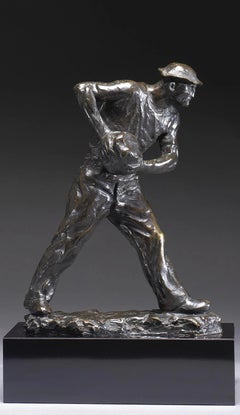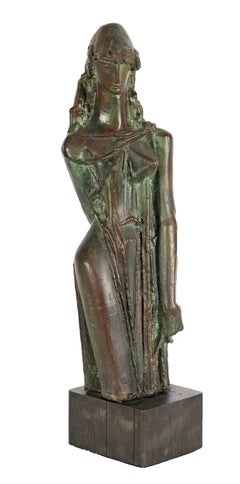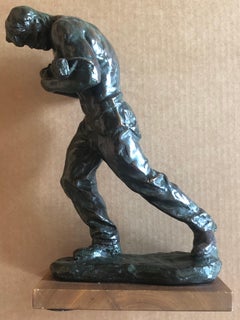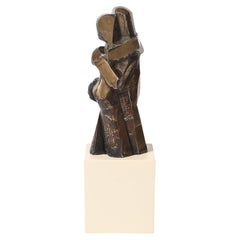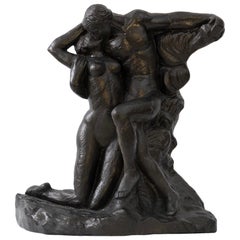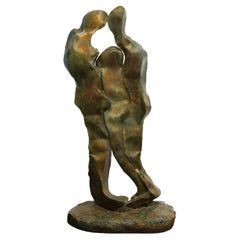Items Similar to "Couple II" Mid 20th Century Modern Abstract Figurative 1940s European Sculpture
Want more images or videos?
Request additional images or videos from the seller
1 of 7
Jacques Lipchitz"Couple II" Mid 20th Century Modern Abstract Figurative 1940s European Sculpture1947/48
1947/48
$75,000
£56,417.99
€65,357.62
CA$105,734.48
A$117,583.79
CHF 61,715.76
MX$1,433,877.75
NOK 779,964.93
SEK 731,248.20
DKK 487,821.38
About the Item
"Couple II" Mid 20th Century Modern Abstract Figurative 1940s European Sculpture
Jacques Lipchitz (1891-1973)
"Couple II"
Bronze
signed on the base
The sculpture was conceived in 1947 and executed by 1948.
8 h x 8 w x 4 3/4 d inches ( overall including the base )
Provenance:
The Artist
Buchholz Gallery (Curt Valentin), New York
Acquired from the above by the late owners, 1948
Christie’s, auction, New York, 2 November 2005, lot 488
Private estate
Exhibited:
"Jacques Lipchitz, Early Stone Carvings and Recent Bronzes", Buchholz Gallery (Curt Valentin), New York, March-April 1948, no. 21
"The Rosen Collection", Baltimore Museum of Art, July-September 1952
"4000 Years of Modern Art", Walters Art Gallery, Baltimore, February-March 1953
"Modern Art for Baltimore", Baltimore Museum of Art, February-March 1957
"Homage to Jacques Lipchitz", Baltimore Museum of Art, May-July 1974
Literature:
H.A. Arnason, "Sketches in Bronze", New York, 1969, a terracotta version illustrated, no. 133
The Selma & Israel Rosen Collection, Baltimore, 1986, illustrated
A.G. Wilkinson, "Sculpture of Jacques Lipchitz: A Catalogue Raisonné: The American Years 1941-1973", London, 2000, vol. II, no. 411, page 251
BIO
Jacques Lipchitz, the eldest son of a wealthy Jewish contractor, was born in Druskieniki, Lithuania in 1891. His interest in modeling and drawing was evident when he was in grade school. At the age of 18, and against the wishes of his father to become an engineer, he departed for Paris to enroll in anatomy and stone carving classes at the Ecole des Beaux-Arts - at the encouragement of his mother and uncle. He also studied at the Academie Julian and the Academie Colarossi.
In 1914, Lipchitz traveled with Diego Rivera to Madrid and Majorca, where he was introduced to Picasso, Max Jacob, Juan Gris, Modigliani, and other artists in the Cubist circle. However, his greatest influence came from his interest in art history, providing him with an unlimited source of imagery.
Lipchitz applied theories of mathematics and proportion to the concepts of Braque and Picasso, as did many second generation Cubists. A relatively new movement in art was being created, where curves, planes, lines, and their intersections and overlapping would form new relationships. His works display a lifetime of continuous growth and exploration, spanning the Cubism style to Mannerism, and subjects from non-committal to those that carry profound visual symbolism. Although he was a leader in innovation and experimentation, his work never embraced total abstraction and never tried to escape from the reality of art as symbolic expression.
In the mid-1920s, Lipchitz began making sculptures in a distinctively new style. His sculptures were frequently constructed from bronze and engaged new ways of exploring light and space. These new works, called transparents, provided a greater emphasis on utilizing negative space. Although unpopular at the time, the works and ideas behind the transparents became popular with Picasso and Juan Gris.
After 1925, Lipchitz departed from the Cubist manner and began to soften the geometric angularity of his pieces into curvilinear, openwork sculptures whose expressive subjects were drawn from ancient mythology and the Bible. He achieved naturalism in these works that can be seen in Woman Leaning on Elbow.
In 1941, Varian Fry was instrumental in facilitating Lipchitz to flee Vichy, France, to the United States -- during the German invasion of France. Lipchitz relocated in New York where he continued to fill commissions from all over the world including The Spirit of Enterprise, Fairmount Park, Philadelphia; Notre Dame de Liesse, Assy in Haute-Savoie; and his most famous work commissioned for the 1937 Paris Exposition Universelle entitled "Prometheus". (In the myth, the gods punish Prometheus for bringing fire to humans by turning him into stone and allowing a vulture to peck at his liver. In the piece, however, Prometheus is shown unchained, strangling the vulture, used as a symbol of ignorance.) In 1951, he presented Fry with his completed Embracing Figures. In 1952, a fire destroyed and claimed most of Lipchitz' work.
In 1955, he began producing his celebrated semi-automatics-masses of clay or plasticine, which he would first mold underwater using only his sense of touch.
- Creator:Jacques Lipchitz (1891-1973, French)
- Creation Year:1947/48
- Dimensions:Height: 8 in (20.32 cm)Width: 8 in (20.32 cm)Depth: 5 in (12.7 cm)
- Medium:
- Movement & Style:
- Period:
- Condition:
- Gallery Location:New York, NY
- Reference Number:1stDibs: LU1156216306532
Jacques Lipchitz
Biography: Jacques Lipchitz was a celebrated Lithuanian-born French sculptor best known for his Cubist works depicting figures, portraits, and still lifes made of bronze or stone. Born Chaim Jacob Lipchitz on August 22, 1891 in Druskinikai, Lithuania to a Litvak (Lithuanian Jewish) family. To please his parents, Lipchitz studied engineering as a young man. But around 1909, he decided to pursue art instead and moved to Paris to study at the Ecole des Beaux Arts and the Académie Julian in Paris. Lipichitz was a part of the artistic milieu in the famed Montmarte neighborhood of Paris, which included Pablo Picasso, Amedeo Modigliani, and Juan Gris. He became especially influenced with work by Pablo Picasso, who had pioneered a style of art called Cubism. Cubism was an art movement in which images were fractured and broken into simultaneous fragmented shards of perspective. It was strongly geometric and not based on traditional representational art like portraits or landscapes. At the beginning of his career, Lipchitz created figural sculptures, but by around 1913 he'd shifted direction toward Cubism. At the time, most Cubist artists were painters, but Lipchitz had met Russian sculptor Alexander Archipenko, who was experimenting with Cubist sculpture. However he always retained recognizable figural elements in his work.
When faced with the Nazi occupation, he fled to the United States during World War II. Lipchitz went on to have a retrospective exhibition in 1954 which travelled from The Museum of Modern Art in New York to the Walker Art Center in Minneapolis, and finally to the Cleveland Museum of Art. Today, his works are in the collections of the Art Institute of Chicago, The Metropolitan Museum of Art in New York, the Tate Gallery in London, the Los Angeles County Museum of Art, and the National Gallery of Art in Washington, D.C., among others. Lipchitz died on May 16, 1973 in Capri, Italy.
About the Seller
5.0
Gold Seller
Premium sellers maintaining a 4.3+ rating and 24-hour response times
Established in 2008
1stDibs seller since 2019
193 sales on 1stDibs
Typical response time: <1 hour
- ShippingRetrieving quote...Shipping from: Pawling, NY
- Return Policy
Authenticity Guarantee
In the unlikely event there’s an issue with an item’s authenticity, contact us within 1 year for a full refund. DetailsMoney-Back Guarantee
If your item is not as described, is damaged in transit, or does not arrive, contact us within 7 days for a full refund. Details24-Hour Cancellation
You have a 24-hour grace period in which to reconsider your purchase, with no questions asked.Vetted Professional Sellers
Our world-class sellers must adhere to strict standards for service and quality, maintaining the integrity of our listings.Price-Match Guarantee
If you find that a seller listed the same item for a lower price elsewhere, we’ll match it.Trusted Global Delivery
Our best-in-class carrier network provides specialized shipping options worldwide, including custom delivery.More From This Seller
View AllFamily Carved Sculpture American Scene Modernism Mid 20th Century WPA Realism
Located in New York, NY
Family Carved Sculpture American Scene Modernism Mid 20th Century WPA Realism
Milton Hebald (American, 1917-2015),
Family of Three
13 1/2 x 5 1/4 x 4 1/4 inches
Carved wood, c. 19...
Category
1940s American Realist Figurative Sculptures
Materials
Wood
"Road Builder" 20th Century Modern WPA Labor Bronze WPA Depression-Era Sculpture
By Max Kalish
Located in New York, NY
Max Kalish
The Road Builder
inscribed M. KALISH 23, with Meroni-Radice foundry mark, on top of base bronze with dark brown patina, on an ebonized rectangular plinth
Height: 13 1/8 in. not including base
Provenance: Spanierman Gallery, New York
BIO
Max Kalish (1891 – 1945)
Born in Poland March 1, 1891, figurative sculptor Max Kalish came to the United States in 1894, his family settling in Ohio. A talented youth, Kalish enrolled at the Cleveland Institute of Art as a fifteen-year-old, receiving a first-place award for modeling the figure during studies with Herman Matzen. Kalish went to New York City following graduation, studying with Isidore Konti and Herbert Adams...
Category
1920s American Realist Figurative Sculptures
Materials
Bronze
"Naomi" Mid 20th Century American Bronze Sculpture Female Portrait Figurative
Located in New York, NY
"Naomi" Mid 20th Century American Bronze Sculpture Female Portrait Figurative
Albert W. Wein (1915-1991)
"Naomi"
Bronze, c. 1960s
Signed
Figure: 19 1/2 x 5 1/2 x 5 inches
Overall he...
Category
1960s American Modern Figurative Sculptures
Materials
Bronze
Barge Toiler -Mid 20th Century Modern WPA Labor Plaster Depression-Era Sculpture
By Max Kalish
Located in New York, NY
"Barge Toiler" by Max Kalish is a Mid 20th Century modern Depression-Era sculpture from his Labor series. The WPA era work is made of plaster.
Max Kalish (1891 – 1945)
Barge Toiler
12 x 8”x 4 inches
Patinated plaster
Signed and monogramed
BIO
Born in Poland March 1, 1891, figurative sculptor Max Kalish came to the United States in 1894, his family settling in Ohio. A talented youth, Kalish enrolled at the Cleveland Institute of Art as a fifteen-year-old, receiving a first-place award for modeling the figure during studies with Herman Matzen. Kalish went to New York City following graduation, studying with Isidore Konti and Herbert Adams...
Category
1930s American Modern Figurative Sculptures
Materials
Plaster
STRIDENT MAN Carved Wood Sculpture Hollywood WPA Modernist Puppet Mid-Century
Located in New York, NY
This 18 x 9 x 4 inch carved wood sculpture is unsigned and comes directly from the artist's family.
Louis 'Lou' Bunin (28 March 1904 – 17 February 1994) was an American puppeteer, artist, and pioneer of stop-motion animation in the latter half of the twentieth century. While working as a mural artist under Diego Rivera in Mexico City in 1926, Bunin created political puppet shows using marionettes...
Category
1940s American Modern Figurative Sculptures
Materials
Wood
Abstract Sculpture Mid 20th Century Modern Non Objective Biomorphic Plaster WPA
By George L.K. Morris
Located in New York, NY
Modern artist George L.K. Morris created this abstract biomorphic nonobjective plaster sculpture during the WPA era of the 1930s / 40s. Monogrammed.
Though George Lovett Kingsland Morris studied with realist painters John Sloan and Kenneth Hayes Miller at the Art Students League, the influence of their points of view was replaced by that of abstractionists Amedee Ozenfant and Fernand Leger. The paintings of Morris were two-dimensional, hard-edged and brightly colored.
Born in New York City in 1905, Morris became a full-fledged abstractionist and a founder in 1936 of the American Abstract Artists. He edited "The World of Abstract Art, the group's publication, and was their president from 1948-1950.
Morris had graduated from Yale in 1928 and studied at the League until 1930, when he went to Paris to attend the Academie Moderne. A sculptor, writer, art critic and teacher in addition to abstract painter Morris himself later taught at the Art Students League from 1943-1944, as well as St. John's College, Annapolis, Maryland, 1960-1961.
Morris' intrinsic abstract bent was made even clearer by his positive feeling for Hans Arp's sculpture. He and Arp edited the French art magazine, "Plastique." Morris also edited the "Bulletin of the Museum of Modern Art" and "Partisan Review."
He died in 1975 in New York City.
George LK...
Category
1930s American Modern Abstract Sculptures
Materials
Plaster
You May Also Like
Mid-Century Modernist Abstracted Figural Bronze Sculpture of an Embracing Couple
Located in New York, NY
This evocative Mid-Century Modernist bronze sculpture, crafted in America circa 1950, represents an abstracted figural depiction of an embracing couple. Boldly minimalist and deeply ...
Category
Vintage 1950s American Mid-Century Modern Figurative Sculptures
Materials
Bronze
Modern Figurative Sculpture Embracing Couple
By Henry Moore, Austin Productions
Located in Miami, FL
An eye-catching figurative sculpture of a kissing couple in the style of Henry Moore.
This piece is made from hand-cast and hand-finished Durastone, which is a special formulation ...
Category
20th Century American Mid-Century Modern Figurative Sculptures
Materials
Stone
$1,160 Sale Price
20% Off
Philip and Kelvin LaVerne One-of-a-Kind "Pas De Trois" Sculpture 1960s (Signed)
By Philip and Kelvin LaVerne
Located in New York, NY
Important one-of-a-kind large hand-brazed sculpture "Pas De Trois" in patinated bronze with green patina by Philip & Kelvin LaVerne, American 1960's (sign...
Category
Vintage 1960s American Mid-Century Modern Figurative Sculptures
Materials
Bronze
Cubist Bronze In the Style of After Jacques Lipchitz, 1930
By Jacques Lipchitz
Located in Sagaponack, NY
A finely modelled standing figural Cubist statue rendered in warmly patinated bronze, titled "Harlequin". Signed G/6.
Category
Vintage 1970s American Expressionist Sculptures
Materials
Bronze
Monoxyl Sculpture, "Couple", 1960
Located in Catonvielle, FR
Important monoxyl sculpture in sycamore representing a couple, the man is prostrate, arms on the ground, the woman stands up.
Unique piece, circa 1960.
Measures: Height 160 cm.
Category
Mid-20th Century European Other Abstract Sculptures
Materials
Sycamore
Henri Collomb, French Artist 20th Century, “Couple Dansant”
Located in Belmont, MA
Henri Collomb, French artist (1905-?), “Couple Dansant” (Dancing couple), walnut hand carved.
The sculpture has a monogram and is dated 192...
Henri Collomb was born in 1905 and w...
Category
Vintage 1920s French Modern Figurative Sculptures
Materials
Walnut
Read More
Ludwig Bemelmans Captures the Thrilling Sight of Coney Island at Night
The ‘Madeline’ creator and Carlyle Hotel legend was in a New York state of mind in the 1940s when he produced this exuberant and rare oil painting.
Mid-Century Americans Didn’t Know Antonio Petruccelli’s Name, but They Sure Knew His Art
The New York artist created covers for the nation’s most illustrious magazines. Now, the originals are on display as fine art.
More Ways To Browse
1940s Modern Art
Clay Sculptures Modern
Bronze Couple
Leaning Sculpture
Clay Sculpture Abstract Mid Century
Vintage Clay Molds
Prometheus Sculpture
Prometheus Light
Roman Feral
Sculpture By Lucy Kinsella
Sculpture Joe Namath
Sebastian Burdon
Shane Fero
Sophie Ryder Bronze
Stepanka Summer
Stephen Glassborow
Takashi Murakami Pillow
Tomasz Koclega
